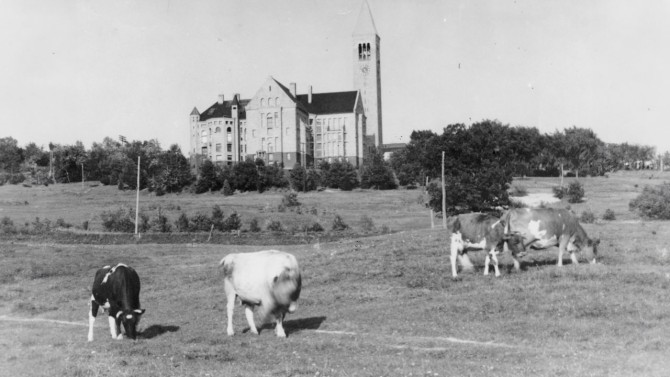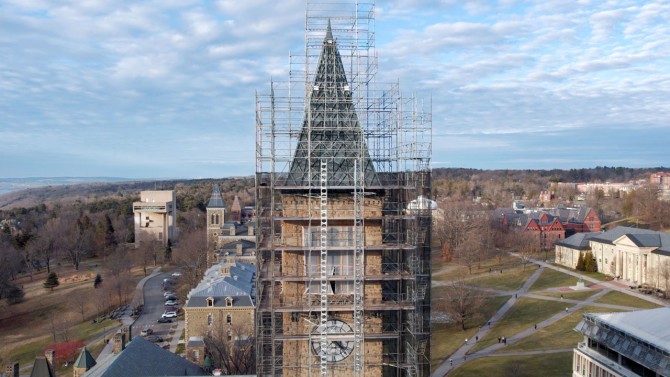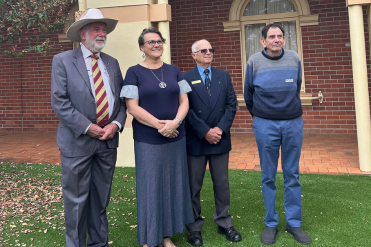In 1891, the University Library, with its 173-foot clock tower, was the newest building on the Arts Quad.
Cows grazed on Libe Slope as 1,538 enrolled students glanced up to the clocks to check the time.
Cows graze on Libe Slope circa 1891, with the building now known as Uris Library and McGraw Tower in the background.
The building glowed with light produced by the newfangled electric lightbulb, and daily concerts rang out from its nine bells.
More than 130 years later, enrollment has expanded to more than 25,000 students, the number of bells has grown to 21 and time and weather have taken a toll on McGraw Tower. A $7 million restoration of the tower and adjacent Uris Library, underway since summer 2023 and expected to be completed in November, includes replacing roofs, repairing masonry and shoring up a century-old entryway.
“This is probably the most iconic building in the region,” said Jon Ladley, director of facilities planning for Cornell University Library, who is part of the planning and project management team. “Taking care of this now is definitely the right thing to do from a stewardship point of view, but also from a preservation point of view.”
In July 2023, construction crews began carefully erecting scaffolding and a construction elevator around the tower in preparation to replace the famous pyramidal roof.
McGraw Tower is shown covered in construction scaffolding on Feb. 7. Crews will begin removing the current roof this spring.
Work has halted for the winter, but in the spring crews will begin removing the roof’s lead-coated copper sheets. The roof was last replaced in the 1930s and has been repaired and patched many times since then, but water keeps finding a way in.
The new roof will maintain the look of the current lead-gray chevron pattern but will be made from sheet lead, a more durable and malleable material. Commonly used on historic buildings today, the sheet lead does not pose any threat to the humans and plants below. Design tweaks to the batten pattern on the roof should prevent water from collecting and lessen the risk of leaks.
“It’s going to look pretty similar,” Ladley said. “It’s not going to have some of the color differences that you see in the lead-coated copper. It’s going to be one uniform color, and it should age uniformly too. It’s going to look a little different but pretty darn close to what folks are used to.”
While the scaffolding is up, crews will repaint the clock faces and steel hands.









